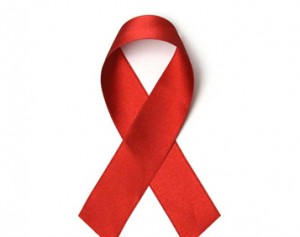UNAIDS says exceeds MDG 6 goal of putting 15 million people on HIV treatment
 The United Nations Programme on HIV/AIDS (UNAIDS) says it has achieved the Millennium Development Goals (MDG 6).
The United Nations Programme on HIV/AIDS (UNAIDS) says it has achieved the Millennium Development Goals (MDG 6).
“The AIDS targets of MDG 6—halting and reversing the spread of HIV—have been achieved and exceeded,” a new joint UNAIDS report says.
According to the report, new HIV infections have fallen by 35 per cent and AIDS-related deaths by 41 per cent. The global response to HIV has averted 30 million new HIV infections and nearly eight million (7.8 million) AIDS-related deaths since 2000, when the MDGs were set.
The report, which was released in Addis Ababa, Ethiopia, on the sidelines of the Third International Conference on Financing for Development, “demonstrates that the response to HIV has been one of the smartest investments in global health and development, generating measurable results for people and economies. It also shows that the world is on track to meet the investment target of $22 billion for the AIDS response by 2015 and that concerted action over the next five years can end the AIDS epidemic by 2030,” UNAIDS said in a press release.
The report notes that in 2000, the world was witnessing an extraordinary number of new HIV infections.
“Every day, 8500 people were becoming newly infected with the virus and 4300 people were dying of AIDS-related illnesses. How AIDS changed everything describes how, against all odds, huge rises in new HIV infections and AIDS-related deaths were halted and reversed,” it said.
The report also added that in 2000, AIDS began to be taken seriously.
It said, “far-sighted global leadership rallied, and the response that ensued made history. Between 2000 and 2014, new HIV infections dropped from 3.1 million to two million, a reduction of 35 per cent. Had the world stood back to watch the epidemic unfold, the annual number of new HIV infections is likely to have risen to around six million by 2014.”
The release points out that the second, critical measure for determining the success of MDG 6 is progress in halting and reversing the number of AIDS-related deaths.
“In 2000, AIDS was a death sentence. People who became infected with HIV had just a few years to live and the vast majority of children born with the virus died before they reached their fifth birthday.
Against incredible odds, the pace of antiretroviral therapy scale-up increased, ensuring more people remained alive and well. By 2005, AIDS-related deaths began to reverse, falling by 41% from 2005 to 2014,” it said.
The report gave credit to UN member countries. It states that countries have invested heavily in monitoring and evaluating their responses to HIV.
“In 2014, 92 per cent of United Nations Member States reported HIV data to UNAIDS. State-of-the-art epidemic monitoring, data collection and reporting have made HIV data the most robust in the world, far more complete than data for any other disease. This has not only enabled the world to have a clear picture of HIV trends, it has also enabled HIV programming to be tailored to the specific dynamics of each country’s epidemic,” it added.
When the Third International Conference on Financing for Development comes to an end on July 16, 2015, a new set of Global Goals for Sustainable Development will be adopted, and one of the goals would be to eliminate HIV/AIDS by 2030.
By Emmanuel K. Dogbevi
